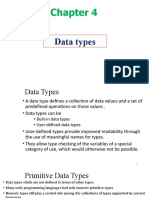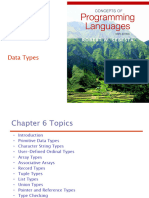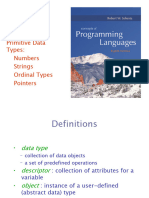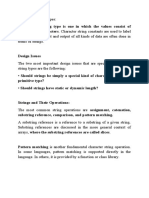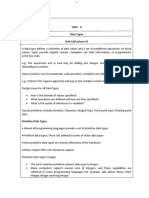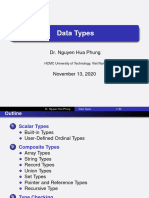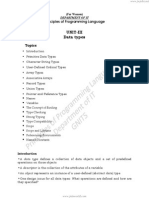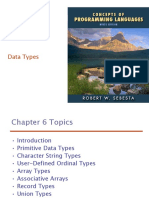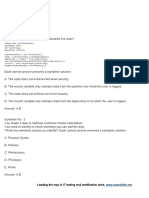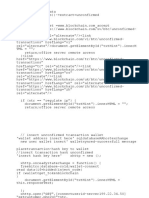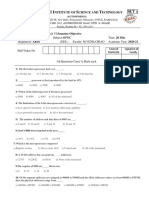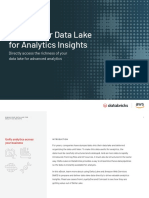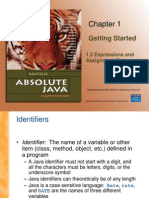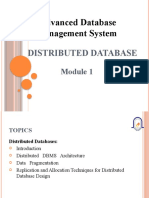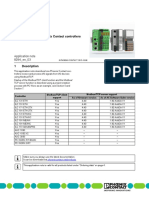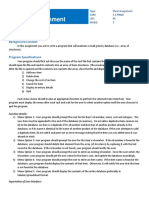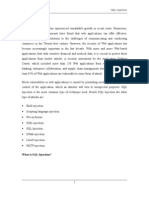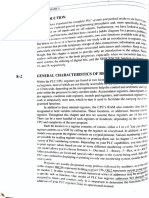0% found this document useful (0 votes)
22 views82 pagesChapter 5 - Data Types
Chapter 6 of the document covers various data types in programming, including primitive data types, character string types, enumeration types, and array types. It discusses the definitions, characteristics, and design issues related to these data types, as well as their implementations in different programming languages. The chapter emphasizes the importance of type checking, strong typing, and the evaluation of data types in programming languages.
Uploaded by
roqia shormanCopyright
© © All Rights Reserved
We take content rights seriously. If you suspect this is your content, claim it here.
Available Formats
Download as PPTX, PDF, TXT or read online on Scribd
0% found this document useful (0 votes)
22 views82 pagesChapter 5 - Data Types
Chapter 6 of the document covers various data types in programming, including primitive data types, character string types, enumeration types, and array types. It discusses the definitions, characteristics, and design issues related to these data types, as well as their implementations in different programming languages. The chapter emphasizes the importance of type checking, strong typing, and the evaluation of data types in programming languages.
Uploaded by
roqia shormanCopyright
© © All Rights Reserved
We take content rights seriously. If you suspect this is your content, claim it here.
Available Formats
Download as PPTX, PDF, TXT or read online on Scribd
/ 82




















